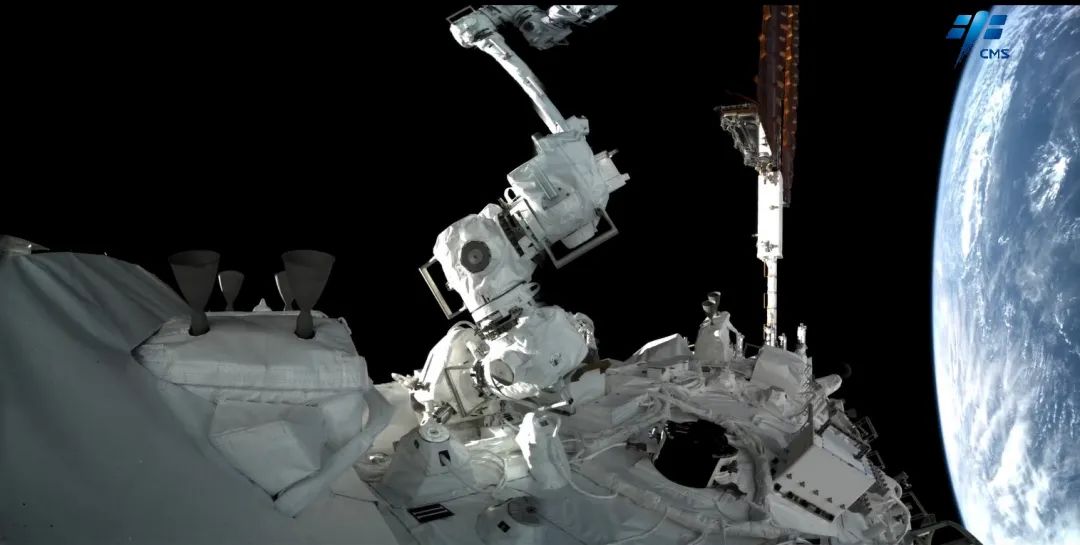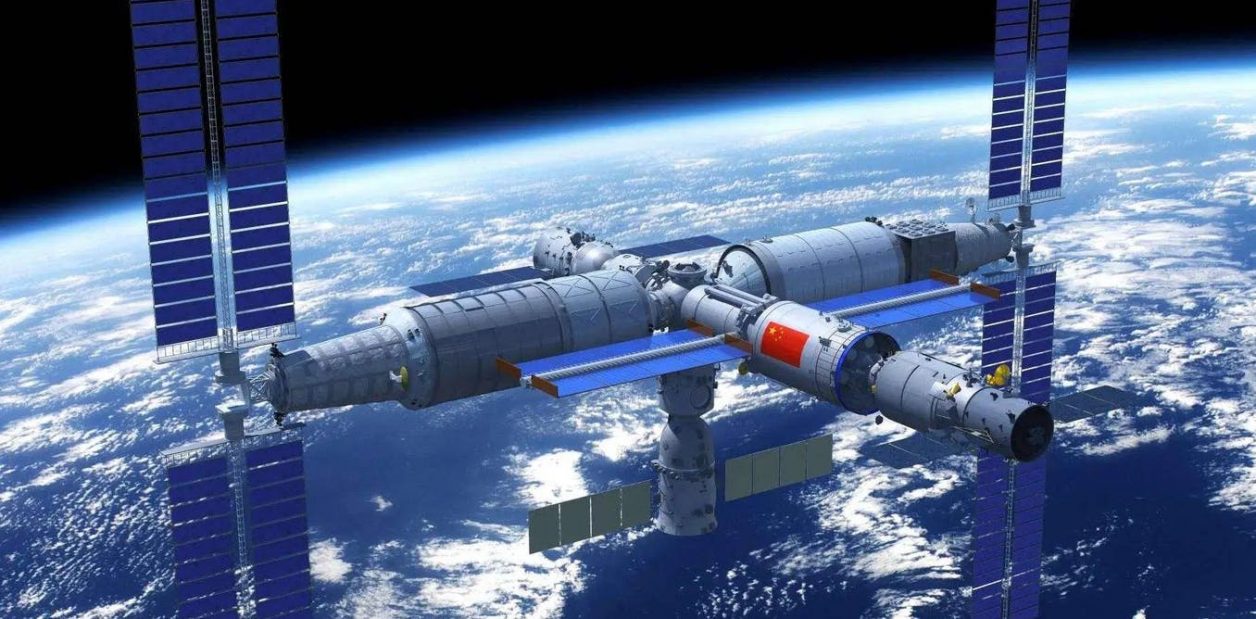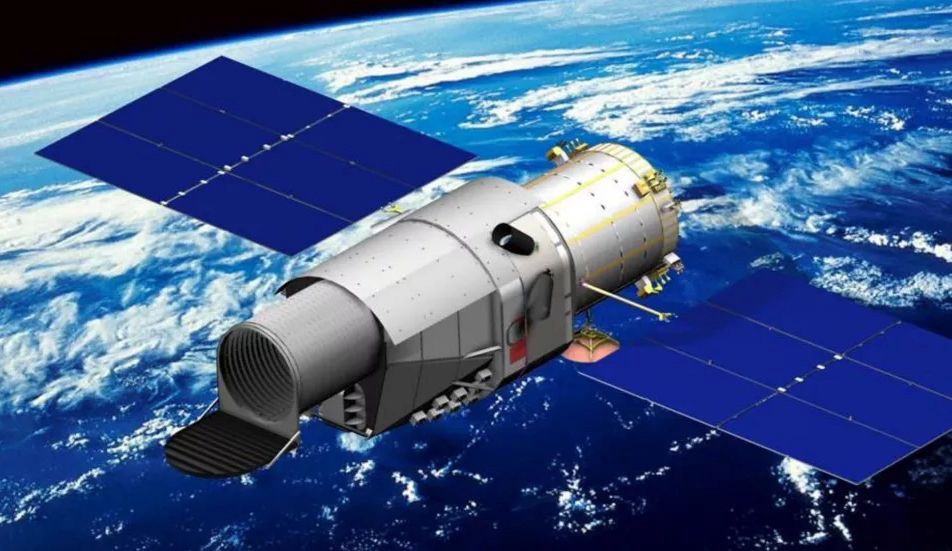The tiny robotic arm on the Wentian lab module of China’s biggest ever spacecraft has completed a series of in-orbit tests, according to the China Manned Space Agency (CMSA).
Wentian (“Asking the Heavens”) is the first lab module of Tiangong, China’s largest spacecraft ever developed. It was launched into orbit on July 24 onboard the Long March-5B Y3 rocket from the Wenchang Spacecraft Launch Site in south China’s Hainan Province.
The Wentian will be a working area for astronauts to carry out scientific experiments. Its small robotic arm will aid the astronauts in extravehicular activities, moving supplies, and maintaining and repairing Tiangong’s exterior.
The arm measures 5 meters in length and can carry payloads of up to three tons, which is one-eighth the load capacity of the larger arm on the Tianhe core module that measures 10.2 meters in length and can carry payloads of up to 25 tons.
As part of its recent in-orbit tests, the arm performed various tasks such as disengaging from its base and crawling on the space station’s surface.
While crawling, the arm was docked and undocked from four adaptors on the space station’s surface to ensure they were working. The arm also examined the space station’s solar arrays and external mounting points.
The smaller arm is reportedly more flexible than the larger one and can perform operations more precisely. Its position accuracy is five times higher than the larger one, and the altitude accuracy is twice as high.

The smaller arm can operate separately or connect with the larger arm to cover a broader range of extravehicular activities. Also, the smaller arm can crawl and move independently on the space station’s surface, helping astronauts in spacewalks’ assembly, construction, maintenance, and repair.
China Aerospace Science and Technology Corporation developed the larger arm. Researchers created the smaller arm at the Harbin Institute of Technology and the Changchun Institute of Optics, Fine Mechanics, and Physics.
The Wentian Lab Module
The Wentian Lab module measures 17.9 meters in length with a maximum diameter of 4.2 meters and a take-off weight of 23 tons. Like the Tianhe core module, Wentian has three sleeping areas, a toilet, and a kitchen.
The Wentian has 22 extravehicular payload interfaces for the experimental payloads that are planned to be delivered to the Tiangong in the next ten years. These scientific payloads will be plugged into their corresponding interfaces using robotic arms.
Watch this footage of #Wentian docking. Blurred recording of the mission control screen, but still great to see the thrusters firing and the final moment of connecting
(c)北京蓝龙 https://t.co/lV7iVKU0UG pic.twitter.com/uaiIAaUG2R— China 'N Asia Spaceflight ??️? (@CNSpaceflight) July 24, 2022
Additionally, the Wentian lab also has eight experimental cabinets for the study of space life sciences, which can support the growth, development, genetics, and aging of multiple species of plants, animals, and microorganisms under space conditions, according to Lü Congmin, a research fellow at the Chinese Academy of Sciences and deputy chief designer of the space utilization system of China Manned Space.
Lü told the Chinese state-owned Global Times that more than ten research directions and 40 scientific projects are assigned to the Wentian Lab.
Tiangong Space Station Nears Completion
Following the success of Wentian Lab, the space station’s third and final lab module, Mengtian (“Dreaming of the Heavens”), is scheduled to lift off in October, after which the construction of the Tiangong space station will finally complete, forming a T-shaped structure.

The Mengtian lab module will be responsible for studying microgravity scientific research and will have experimental cabinets for fluid physics, material science, combustion science, fundamental physics, and space technology experiments.
China also plans to connect the Tiangong with the powerful Xuntian space telescope’s control center, said to be identical to NASA’s Hubble Telescope but with a 300-fold larger field of view.

Xuntian will share the orbit with Tiangong and will be able to dock on the station for repairs, upgrades, and refueling as and when required.
Once complete, the entire space station will reach a total weight of over 180 tons, according to CMSA. Currently, with the Wentian module docked to the Tianhe core module, the space station weighs around 50 tons.
Tiangong will be the fastest-built space station, in only about a year and a half, since the launch of the Tianhe core module in April 2021.
The world’s first space station, Salyut 1, launched by the Soviet Union, took ten years to complete construction, while the International Space Station (ISS) took 12 years.
With the ISS slated to retire sometime in 2030, China’s Tiangong will soon be the world’s only space station.
Meanwhile, Russia has also announced plans to quit the ISS after 2024 and start the construction of its own Orbital Service Station in 2028.
- Contact the author at tanmaykadam700@gmail.com
- Follow EurAsian Times on Google News




